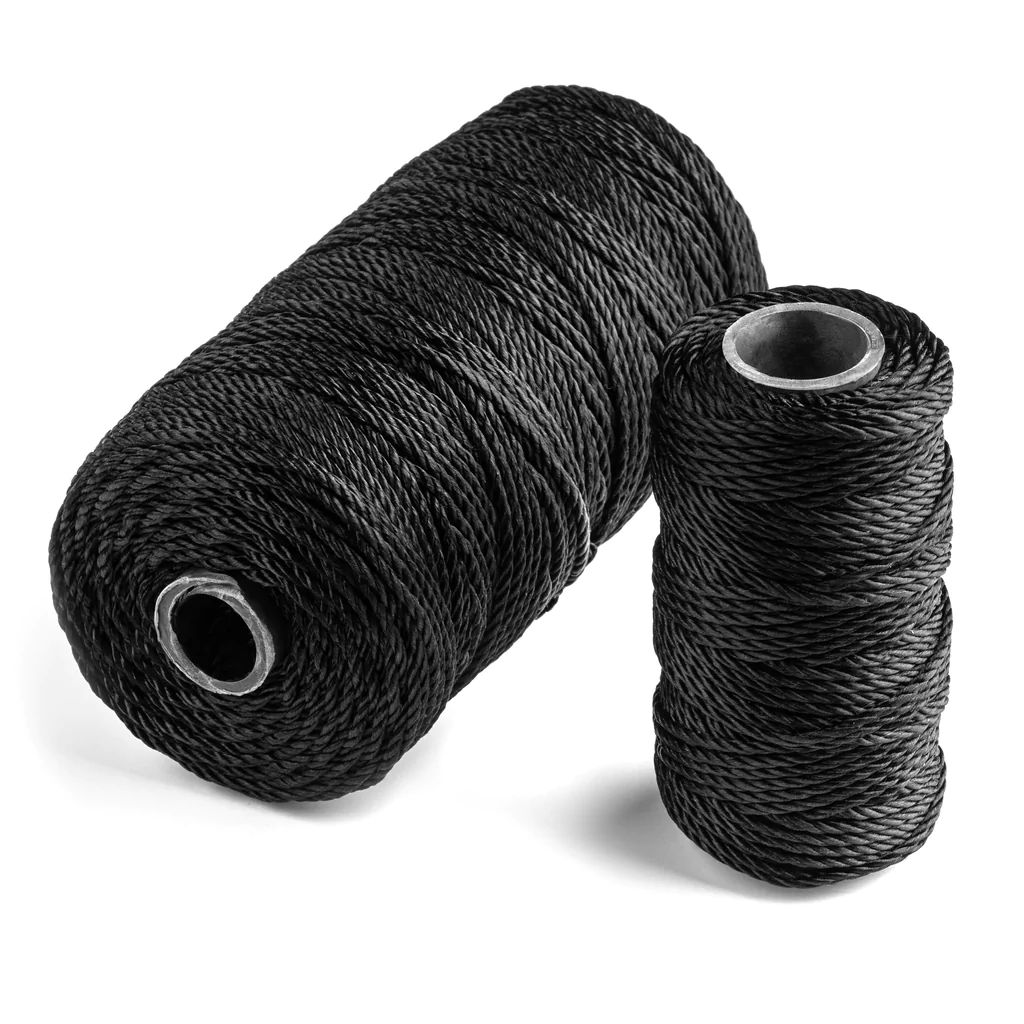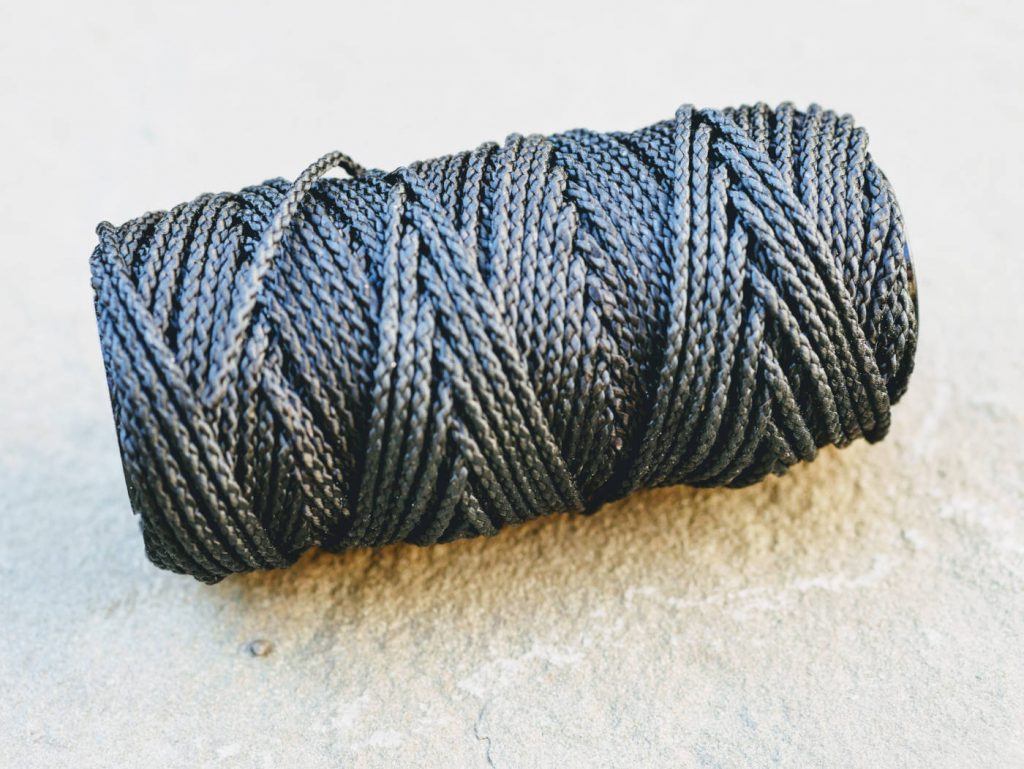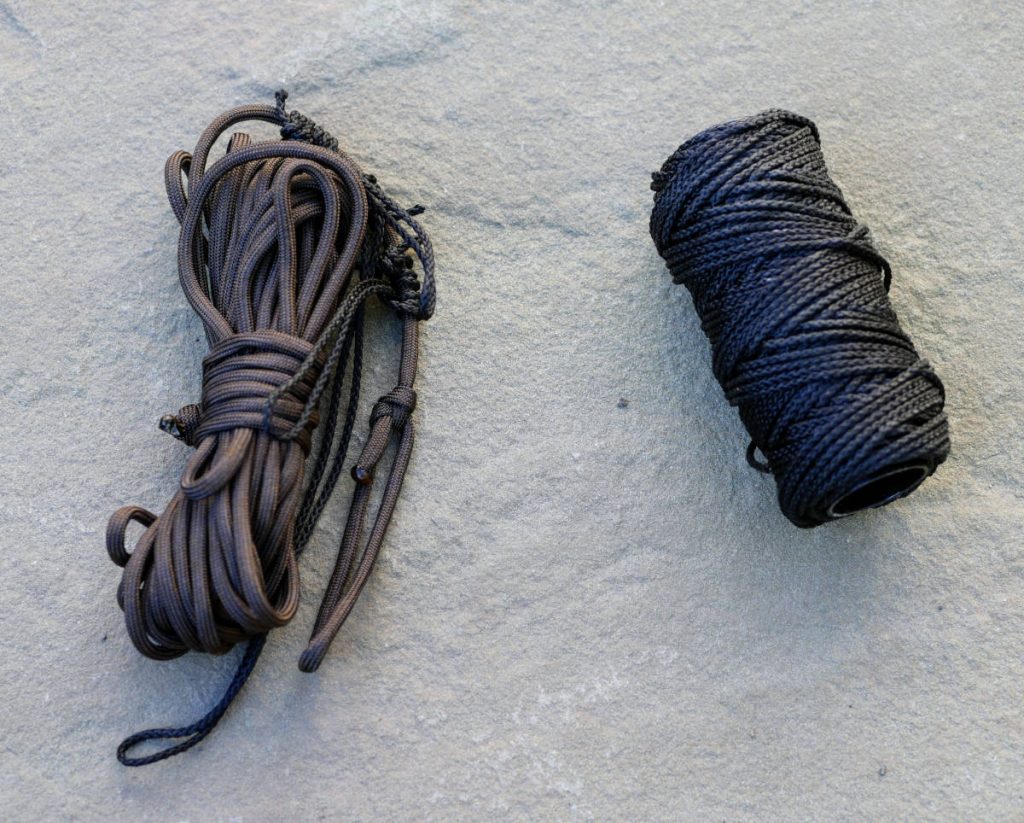Similar to tennis court netting, the bank line is a black nylon twine that is very strong, UV, resistant, inexpensive, and can be helpful in the bushcraft business. The bank line can mirror the actions of a paracord, but the best part is that it has a smaller diameter, making it lighter and easy to carry around.
To catch larger fish, you can toss a strong main line with multiple hooks and return a couple of hours later to collect your prize. Regarding bank lines and their strength and diameters, there are many options. So, what size bank line for bushcraft can successfully get the job done? Let’s talk about it!

What Size of Bank Line for Bushcraft Is the Most Perfect?
The most commonly used bank line for bushcraft is size #36, which has a breaking strength of 320 lbs and is 0.85″ thick.
Despite not being as strong as the paracord, which is 550lbs, 320lbs is also strong in the real world and can be very useful for snares, trip wires, rigging equipment, ridgelines, and for making nets.
Even though the Bushcraft community focuses more on firearms, cordage is another important puzzle. While everyone in the past has used 550 paracords for rifle slings and bracelets, the bank line is a great alternative that captures every survivalist’s eye. In most cases, the bank line is tarred with weather resistance and in different thicknesses.
The most beneficial side of the bank line comes with the size. The bank line takes significantly less space and allows you to pack more cordage than you used to without compromising the capability and strength.
Additional details
The term bank line comes from trotline fishing. This technique is most commonly used for utilizing catfish because it uses an extended cord that starts from one river bank and reaches another.
The cord is hooked, and the bait captured on the line cannot sink in the center because the cord is strategically placed.
To operate properly, the fishing line must be strong enough to handle the resistance from fish, the wet surroundings, and the water currents. In addition, the bank line is easy for knot-tying.
All the features point that the bank line would be a great addition to a camping trip. For that reason, many people in the bushcraft community have started to use it.
What Is It Made Of?
Upon explaining what size of bank line for bushcraft is perfect, I should also address the material of the cord. Generally speaking, this black nylon cordage resembles the net of a tennis court the most. So, one may ask, why is it so strong, and what sets it apart?
The answer is that it offers much better resistance to UV rays, is strong, durable, and can easily be purchased on the market for a very low price.
Tars cover the bank line, another important thing worth pointing out. The tar coating adds a lot more strength when tying up knots. The tar layer may give a little sticky feel to the overall appearance of the line, but it is a small price to pay.
Even though tar has a strong smell that anyone can easily recognize, do not worry. Eventually, you will get accustomed to it.
Read More: What Are Ranger Beads?

Important Uses and Benefits
The major advantage of a bank line is that it requires much less space in the bag compared to paracord 505. This is because the line has a much smaller diameter than paracord and, in fact, any other cording offering on the market. Everyone likes to carry around something useful and strong.
Bushcraft enthusiasts and survivalists recognize the major benefits of the bank line: flexibility and strength. You can use this cord for lashing food bags, gear racks, and tents.
On top of that, you can create garden shelters with it. While not going over the flexibility and strength of the bank line, the cord can be useful for anchoring heavy items in place, tying knots, or fishing.
Types of bank line cords
On the market, there can be bank lines of different sizes. The first one is #36, which I mentioned is perfect for bushcraft, weighs 320lbs, and is mostly recognized for its strength.
Another popular type is the #12 bank line, a much thinner model mostly used for lighter applications. This bank line variant weighs around 100lbs. When specifically talking about the type, you have two options:
- Twisted bank lines
- Braided bank lines.
At first glance, anyone can notice the difference between these two, but as far as I am concerned, they are on the same level, and it all depends on the preferences of the individual that uses them.
To be fair, people often consider the braided option more potent because it has fiber weaves which contribute to its strength.
Can a bank line be used for sewing?
Since the bank line cord is a tacky nylon twine that can tightly hold knots, you can absolutely sew with it. The best part is that it is resistant to abrasion and sunlight, solid, and comes at a low price.
In addition, you can remove the inner strands and use them to sew your gear. Also, you can use the bank line cord for:
- Bushcraft
- Sports netting
- Survival beads
- Winding wind chimes
- Securing tarps
- Gardening
- Weaving
- Litter netting
- Binding.
Bank Line vs. Paracord
Speaking of bushcraft, both options offer different benefits and can come in handy in various circumstances. If I were to compare both in detail cords, it is obvious that the back line is lighter, stretchy, thinner, weather resistant, and affordable. On the other hand, the paracord is more tensile, elastic, and expensive. The choice is up to you.
Also Read: What Is a Gimlet Tool?

Conclusion
All of my knowledge about bank line cords points to the fact that they are much lighter, stretchy, and cheaper, which leads me to choose it every time over paracord.
In my article, I explained what size of bank line for bushcraft would be the most suitable, together with the key uses and benefits of the cord.
If you were on the fence and wondering which thread would be perfect for you, now you have all the important information at your disposal.
